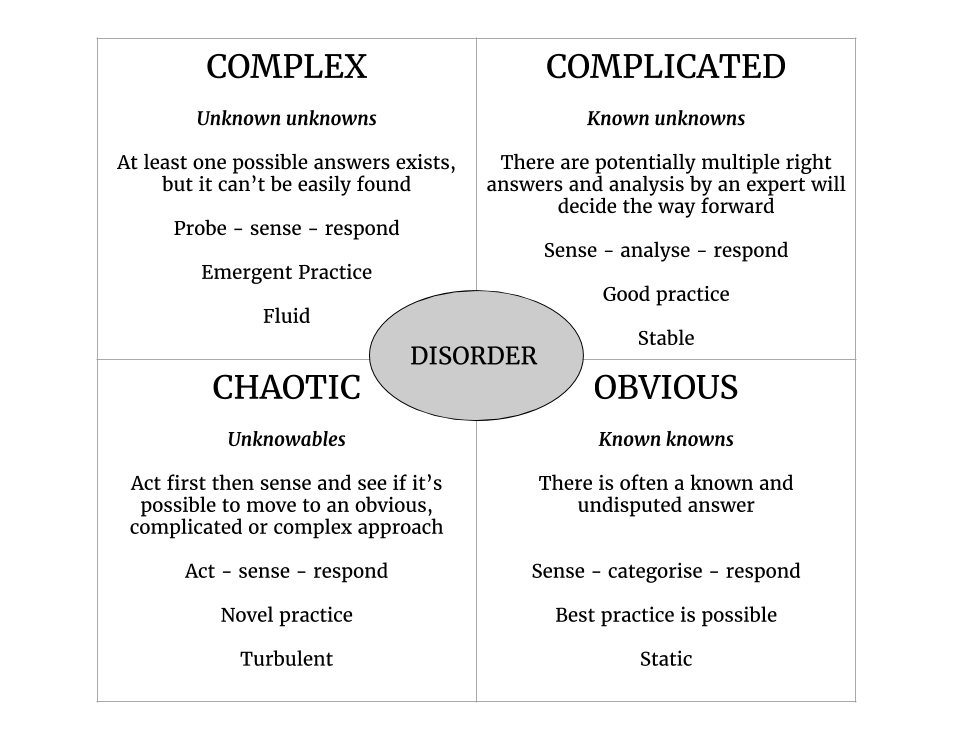Cynefin is a sense-making framework; it offers us a perspective from which we can assess a situation and identify a strategy to deal with it.
The framework has four defined quadrants: OBVIOUS, COMPLICATED, COMPLEX, and CHAOTIC. Each quadrant defines a classification of a problem. In the center, there is a bubble of DISORDER; this is where issues that are yet to be classified reside.
The four classifications and some descriptions of each are shown in the following diagram:

If we use the Cynefin framework to frame how we solve business problems, then one way of describing each quadrant would be:
- OBVIOUS: The solution to the problem is evident to all.
- COMPLICATED: The solution isn't obvious to everyone, but an expert in the domain would be able to analyze the problem and guide us to a solution.
- COMPLEX: This type of problem involves too much complexity for us to solve it through analysis alone. Instead, we have to conduct experiments (sometimes called Spikes) to determine what might work. We evolve our hypothesis based on each test's results.
- CHAOTIC: This type of problem catches us entirely by surprise. We have to act first, for example, to remove ourselves from immediate danger. We can then assess how to break down the problem into one of the three other classifications and deal with it.
For a software delivery team, it's rare that we're tasked with something OBVIOUS, especially as we're often using new technologies and solving complex business problems.
Sometimes we slip into the CHAOTIC quadrant, which can come in multiple forms, for example, a security breach in our production environment. Hopefully, this is also rare.
We quite often operate in the COMPLICATED quadrant which requires, at the very least, a degree of analysis and guidance toward a solution, usually by an expert in either the domain or the technology, or both.
However, if we're using new technologies and working on novel ideas, which we often are, then we're operating in the COMPLEX quadrant. This requires a different approach; analysis will only take us part of the way. Sometimes we just have to do something to discover how it might work. This is where Agile incremental delivery approaches will help us validate our ideas quickly.
Innovation with new technologies and business ideas creates a high degree of complexity due to the uncertainty of success in either the product or technical direction. We often talk in terms of developing resilience in these situations rather than developing the perfect solution. To do this, we need to operate the COMPLEX quadrant's empirical, hypothesis-driven, fail fast/learn rapidly approach.
